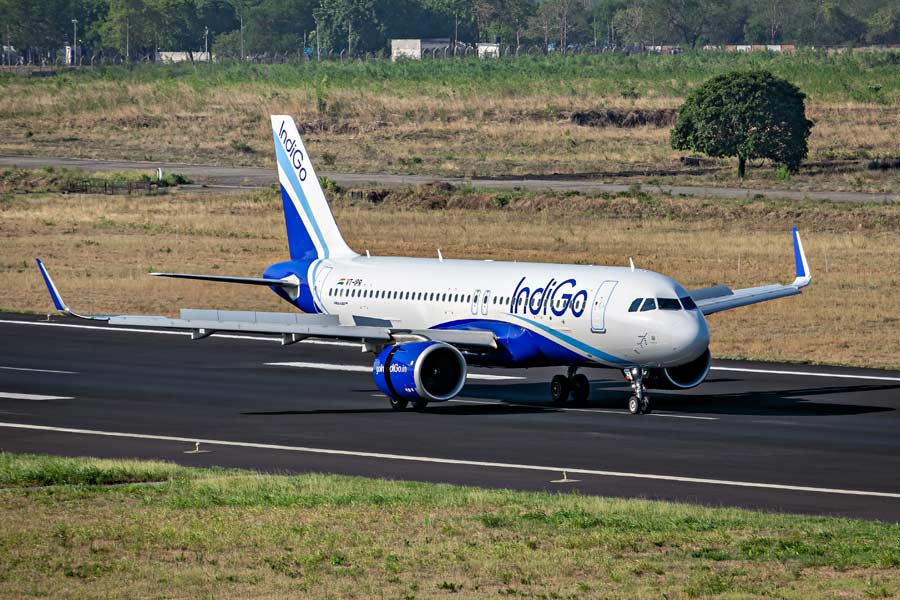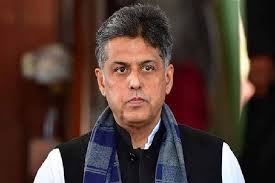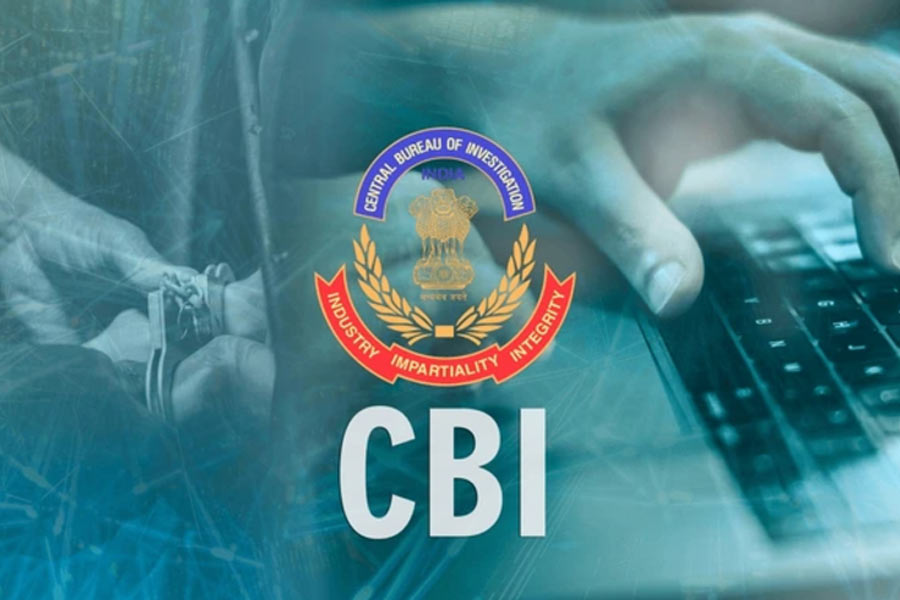 |
| Junior foreign minister E Ahamed’s hoarding in Malappuram, showing him with Yasser Arafat to suggest that the UPA candidate is not “pro-imperialist”. (Ali Kovoor) |
Chattiparamba (Malappuram district), April 13: On either side of the road that ribbons past this little junction lies an endless stretch of green. Trees laden with raw green mangoes, giant overripe jackfruit and hundreds upon thousands of coconut palms as far as the eye can see.
Malappuram district has the highest area under coconut cultivation in Kerala but it is famously green for another reason. Carved out into a separate entity by the E.M.S. Namboodiripad government in 1969, Malappuram is the state’s only Muslim majority district and a bastion of the Indian Union Muslim League (IUML).
Or shall we say was? In 2004, the League faced a shock defeat in Manjeri — one of the two Lok Sabha seats of Malappuram — when the unfancied T.K. Hamza of the CPM bagged it by a margin of nearly 50,000 votes.
Manjeri has been renamed Malappuram after delimitation but Hamza’s battle this time is a lot tougher. The League’s all-India president and minister in the UPA government, E. Ahamed, is his opponent this time and is — for the first time in memory — campaigning furiously.
Chattiparamba is situated at the crossroads of Malappuram and Ponnani, and it is the latter which has been making all the news this time around. It hit the national headlines when the CPM insisted on fielding its own “Independent” candidate, M. Rahamathulla, although the seat fell under the CPI’s quota — even though the party had never won it.
After much wrangling, the CPI finally gave in and was given the Wyanad seat to contest as compensation.
Even more controversially, the CPM received the “unsolicited” support of Abdul Madani whose hardline People’s Democratic Party (PDP) has about 30,000 to 40,000 votes in Ponnani and is fully backing the LDF Independent.
The “Madani factor” has been a major talking point throughout the state for the UDF as well as the BJP, with both banking on a “backlash” in the form of Hindu and Christian consolidation in reaction to the CPM’s open hobnobbing with “Muslim fundamentalists”.
Even well-wishers of the Left have winced at the spectacle of CPM state secretary Pinarayi Vijayan and Madani sharing the same platform, and fear the repercussions of what they regard as an unfortunate electoral tactic.
But conversations with a range of people in the heart of Malabar’s Muslim epicentre make it clear that the Madani move is not a one-off gamble — it is one more experiment in a problematic strategy that has been years in the making.
The communists, who had the strongest organisation in the erstwhile Malabar region of north Kerala, have always struggled to make inroads in Malappuram which remained an impregnable League fort since Independence.
Theoretically, party insiders say, there were two options. The first was to draw the League into the LDF — something the League was ready for. The second was to break the complete consolidation of Muslims behind the League and, simultaneously, “appeal directly to the Muslim masses”.
The issue has been a recurring fault line in the CPM over the years. In the early 1980s, the CPM leadership, in pursuance of the second objective of breaking the League’s stranglehold, allied with a breakaway group called the All India Muslim League (AIML) which became part of the LDF.
In 1986, the AIML left the LDF and re-merged with the League in the backdrop of the debate over the Shah Bano verdict and the Rajiv Gandhi government’s decision to overturn the verdict through the Muslim women’s bill. The CPM opposed the bill and the then general secretary, Namboodiripad, unleashed a campaign decrying both majority and minority communalism.
But a section in Kerala, led by M.V. Raghavan, argued that since the Congress was the Left’s main enemy in the state, the Left should ally with the League. Raghavan and his group left the CPM over the issue to form the Communist Marxist Party which, ironically, went on to become part of the Congress-led UDF.
 |
Some years later, the question returned to haunt the CPM when a section of the League led by its president Suleiman Sait broke away to form the Indian National League (INL) in protest against the Congress’s failure to protect the Babri Masjid (and the League’s refusal to quit the UDF.) A powerful section of the state unit of the CPM was ready to accede to the INL’s request to be part of the LDF but this was vetoed by the central leadership, leading to differences among the Kerala leadership. The INL, incidentally, is now in the LDF.
The latest move to “accept” the PDP’s support (as well as reach out to small Muslim groups) is part of the continuing attempt to break the monopoly of the League in the Malabar region, a necessary condition for the Left to be able to “directly reach out to the Muslims”, a party activist said.
That the strategy is paying off to some degree is evident in Malappuram and Ponnani. M.P. Madhavan, a mechanic who returned home two years ago after decades in the Gulf, still cannot believe, literally, the writings on the wall. “The League never appealed for votes before. It only asked the people to give them a bigger lead,” he says, adding that neither late president G.M. Banatwala nor Ahamed bothered to campaign, so assured were they of victory.
As young men sporting the distinctive Moplah Muslim white turban, called talekettu, ride past on motorcycles bearing large red flags, Madhavan says: “As an outsider, you will not understand — a revolution is happening here with Muslim youths coming out to join the DYFI and the party.”
Hamza — who is a popular MP and locally famous as a Mappilappattu singer (a genre of music as dear to Moplah Muslims as Rabindra Sangeet is to Bengalis) — first breached the League fort in 2004. This was followed by the decision to hold the state party conference for the first time in Malappuram in early 2005 and then victory in as many as five of the 12 Assembly seats in the district (it has now gone up to 16 post-delimitation) in 2006.
Ahamed has shifted from Ponnani (where he won by a margin of over 1 lakh votes in 2004) to Malappuram because the new reconfiguration of the constituency suits him. But though he has an edge over Hamza, he is pulling out all the stops to win by a respectable margin — with large hoardings showing him in the company of Yasser Arafat and Iran President Ahmadinejad dotting Malappuram to counter the charge that as UPA minister, he was “pro-imperialist”.
In Ponnani, the League candidate, K.T. Muhammad Basheer — like Hamza next door — is personally very popular but the CPM is making the most of its formidable organisational machinery to make it a “neck-and-neck” battle for the first time in history.
Neither seat falls in the LDF’s “100 per cent sure” category but then the electoral battle is only part of a much wider objective to infuse shades of red in Malappuram’s swathe of dark green.










